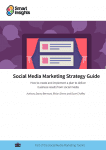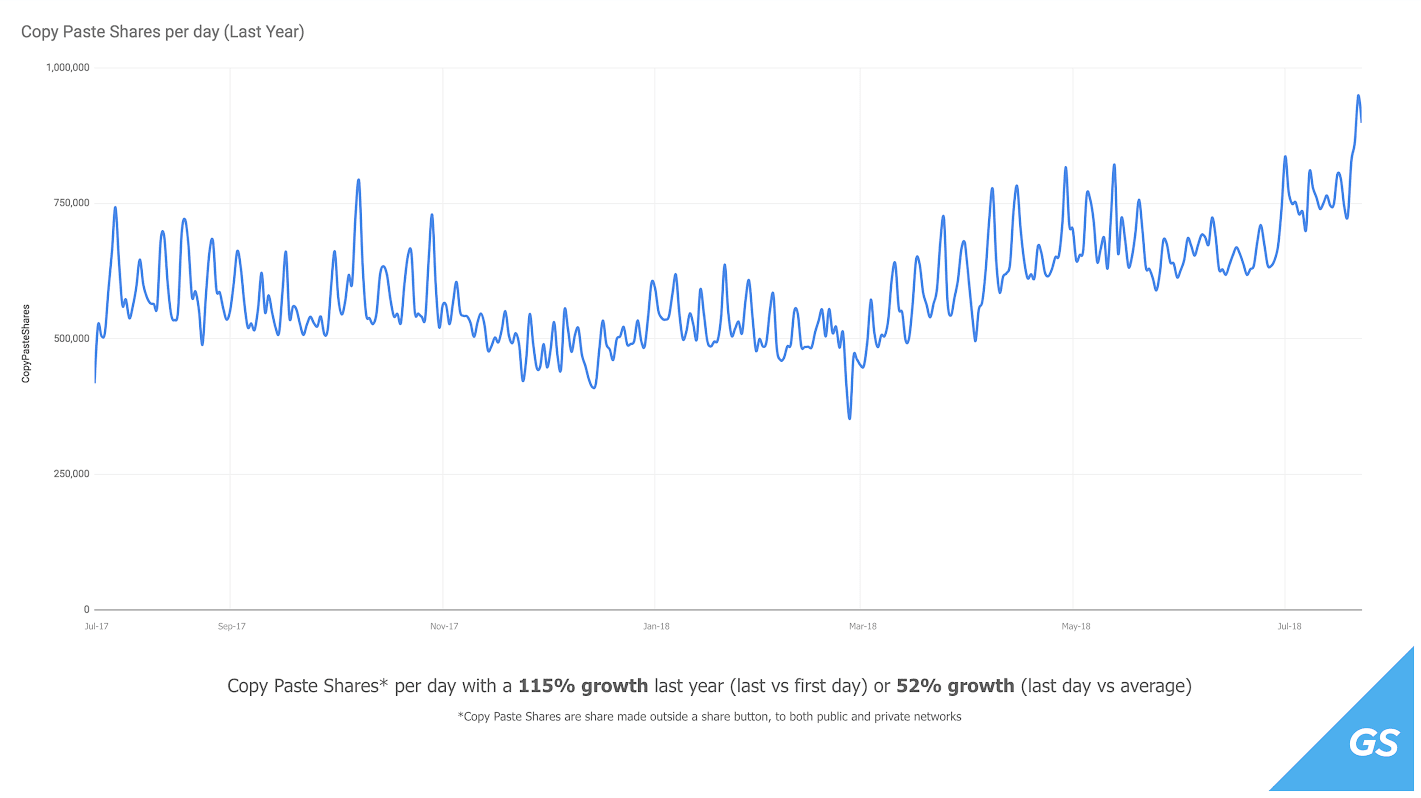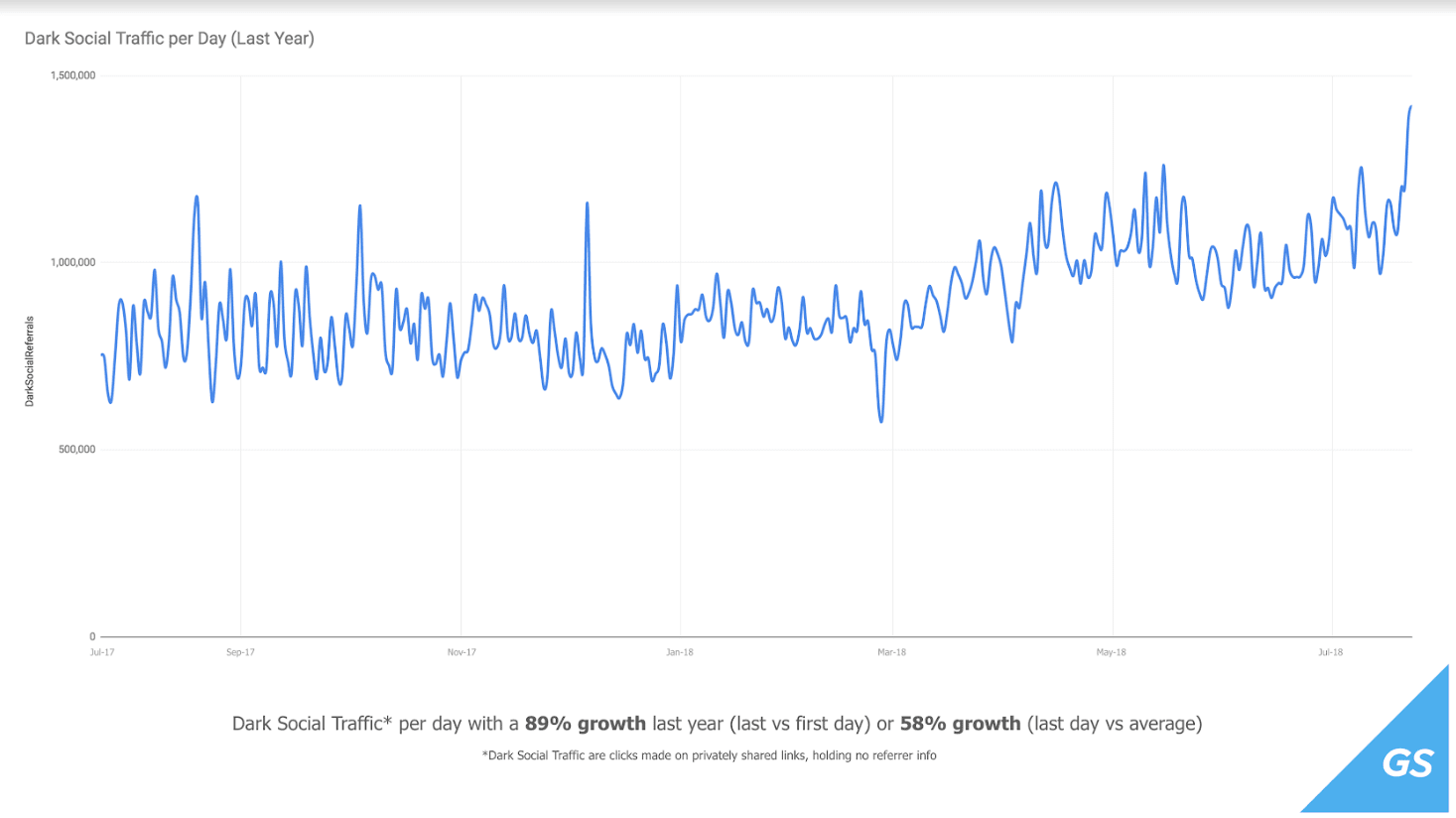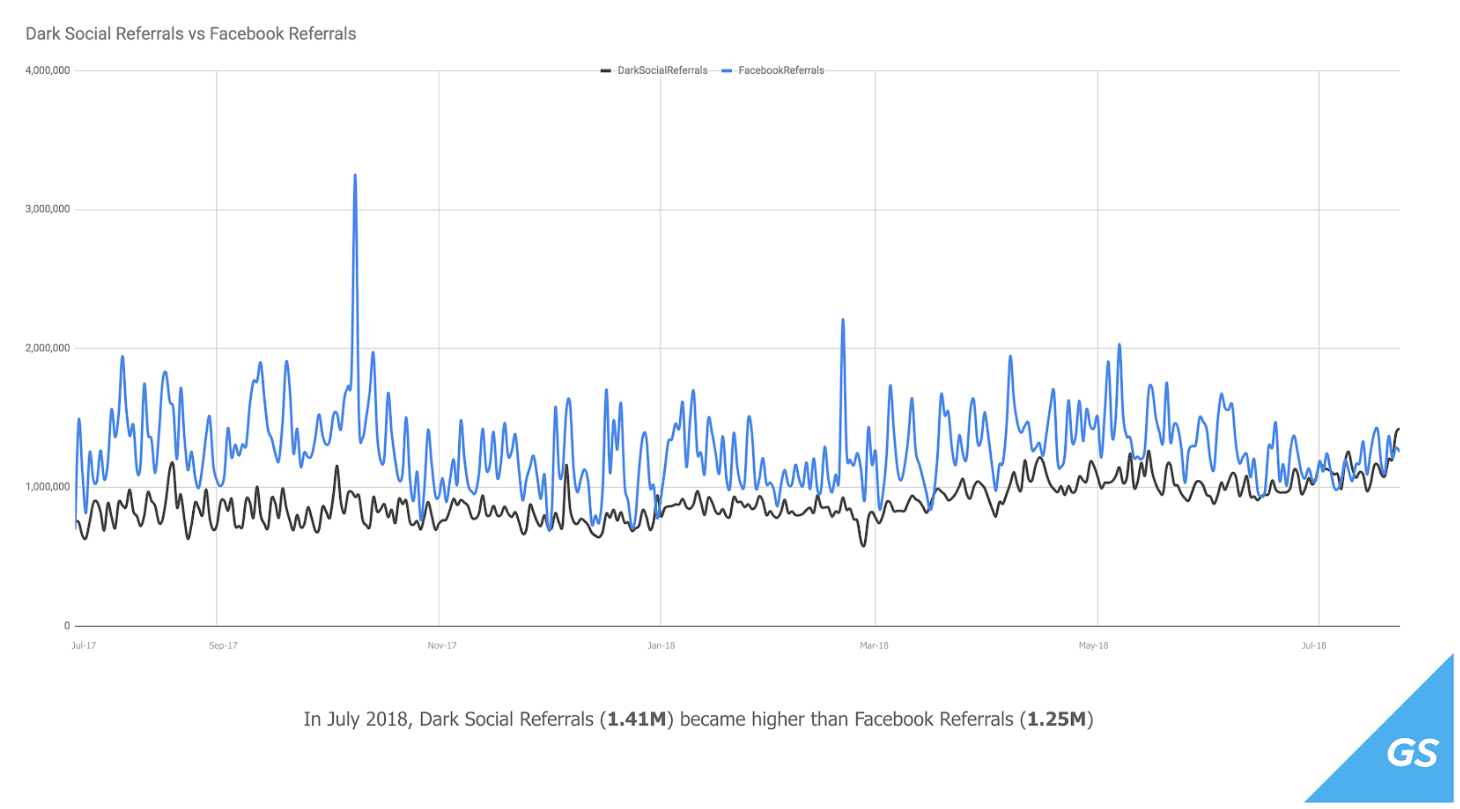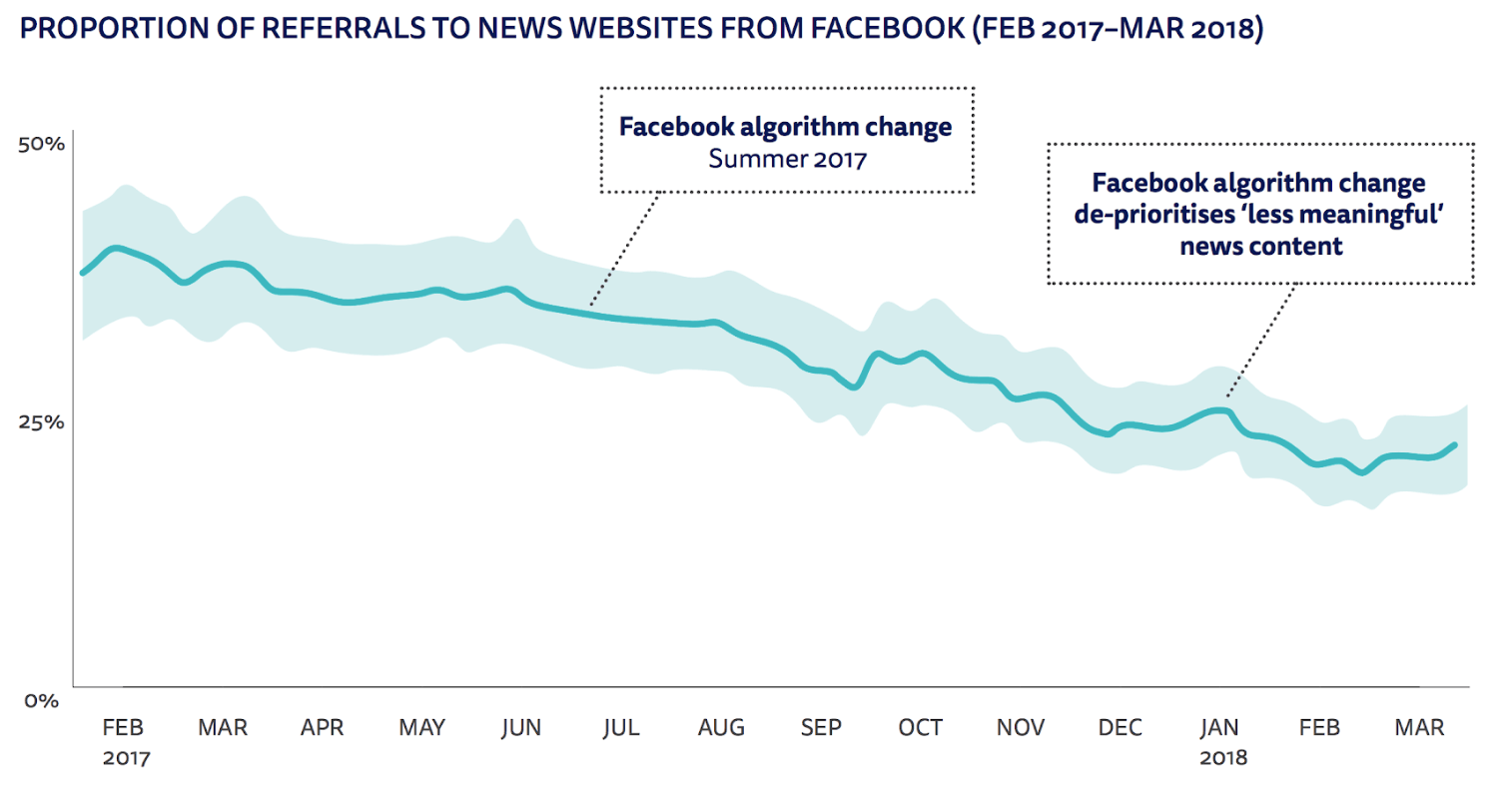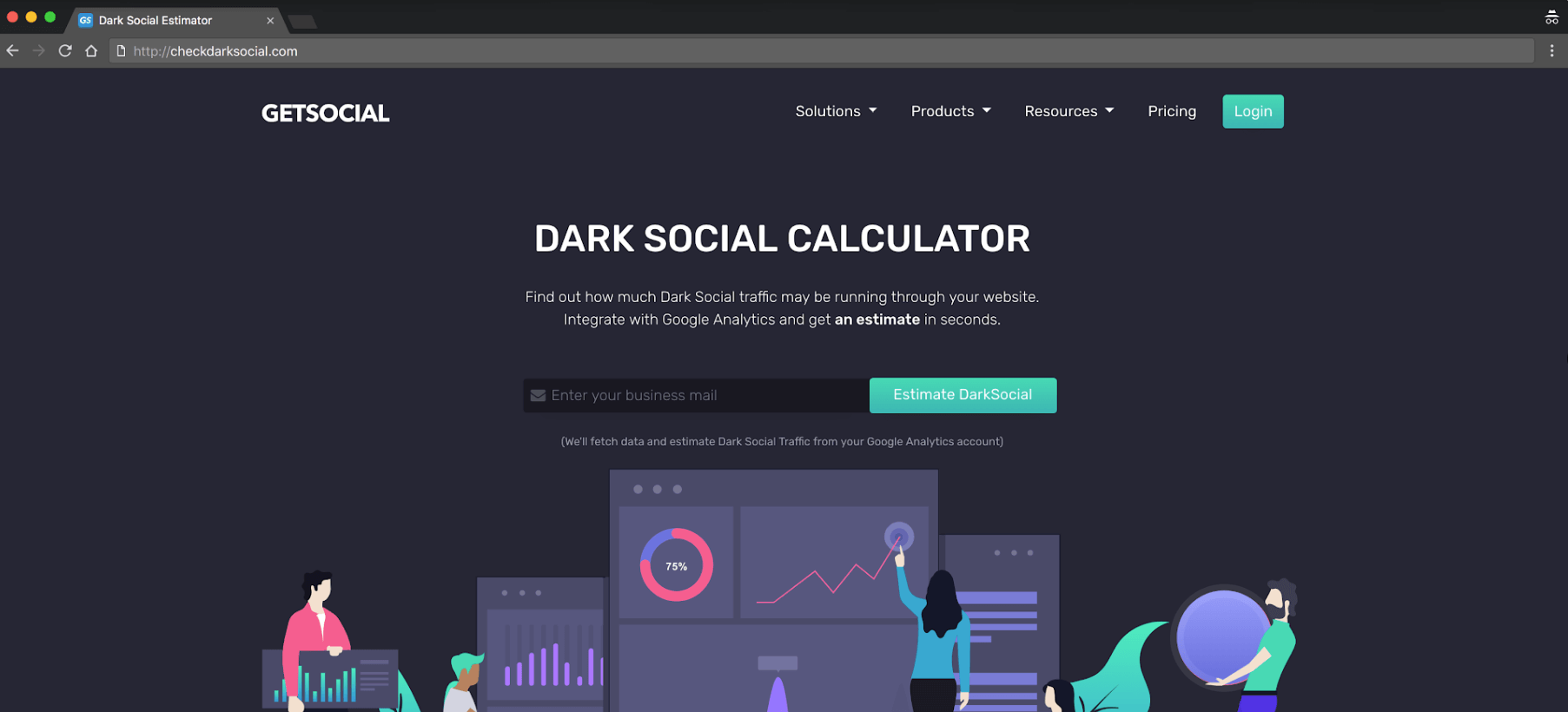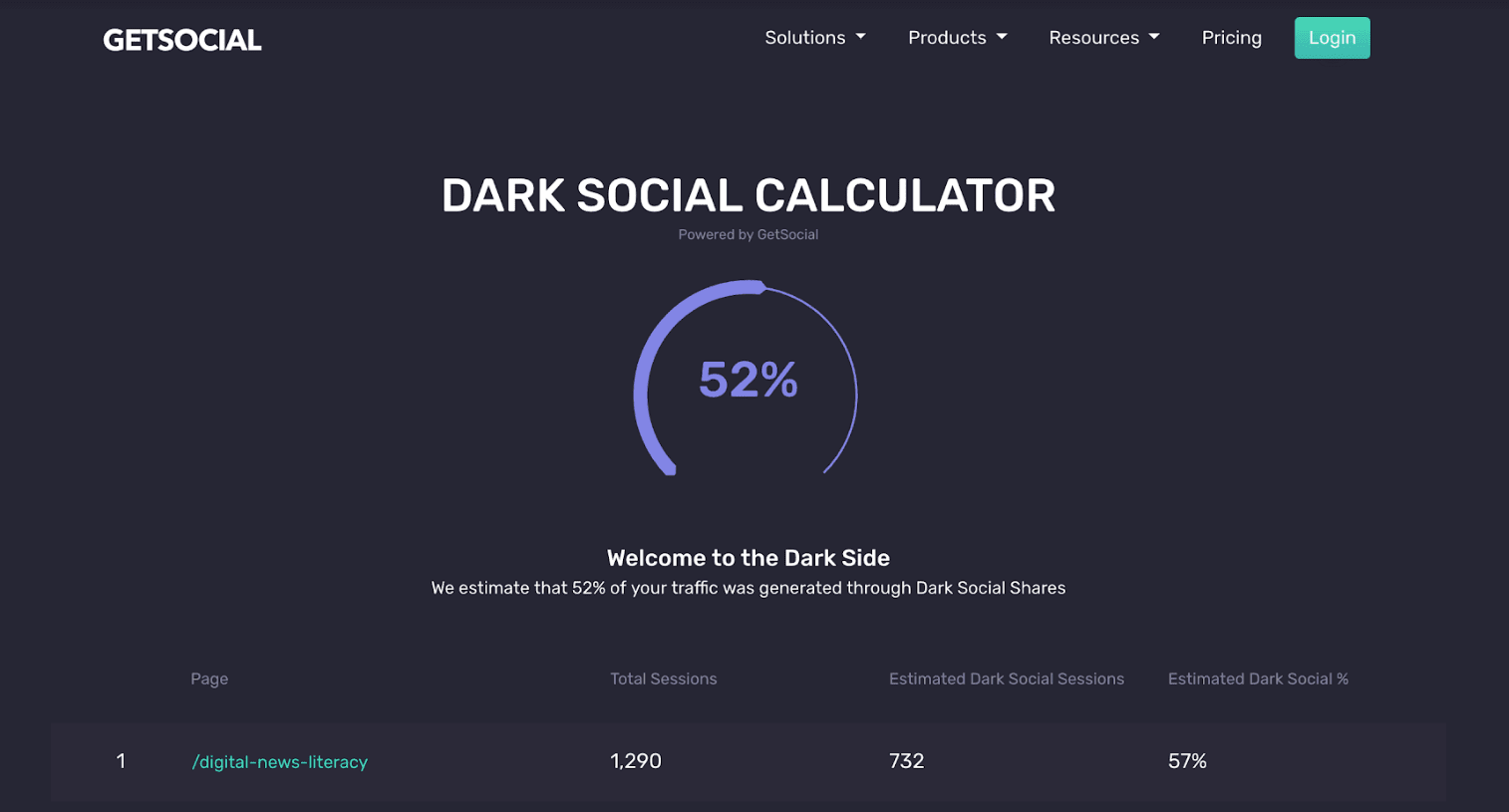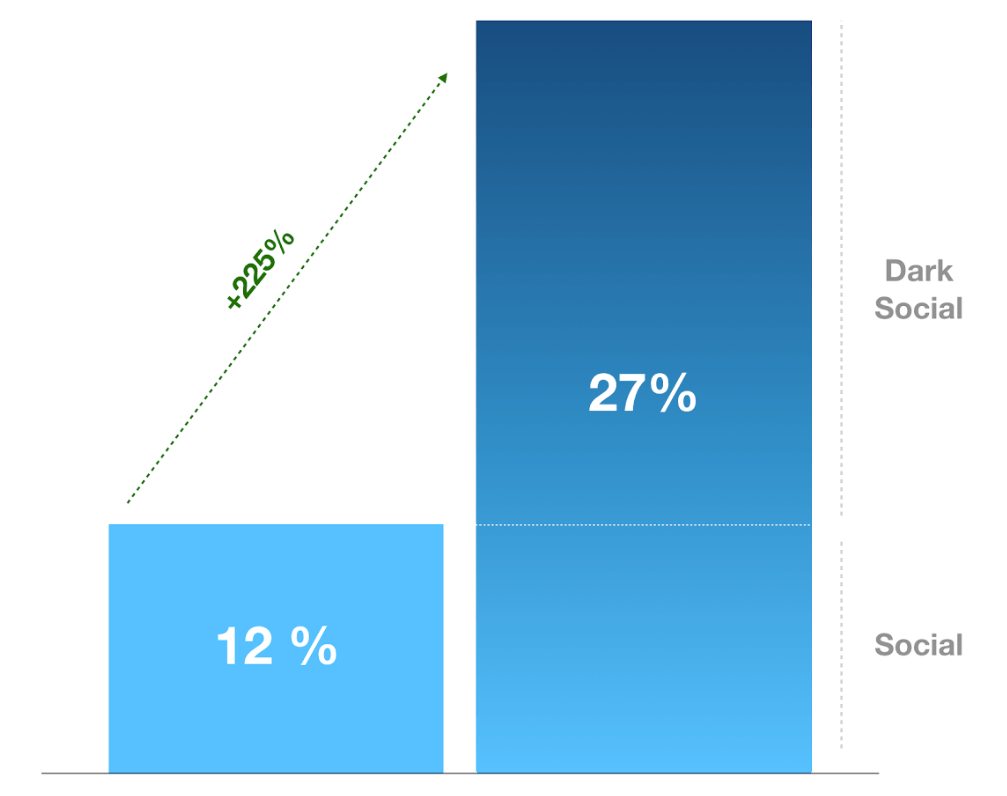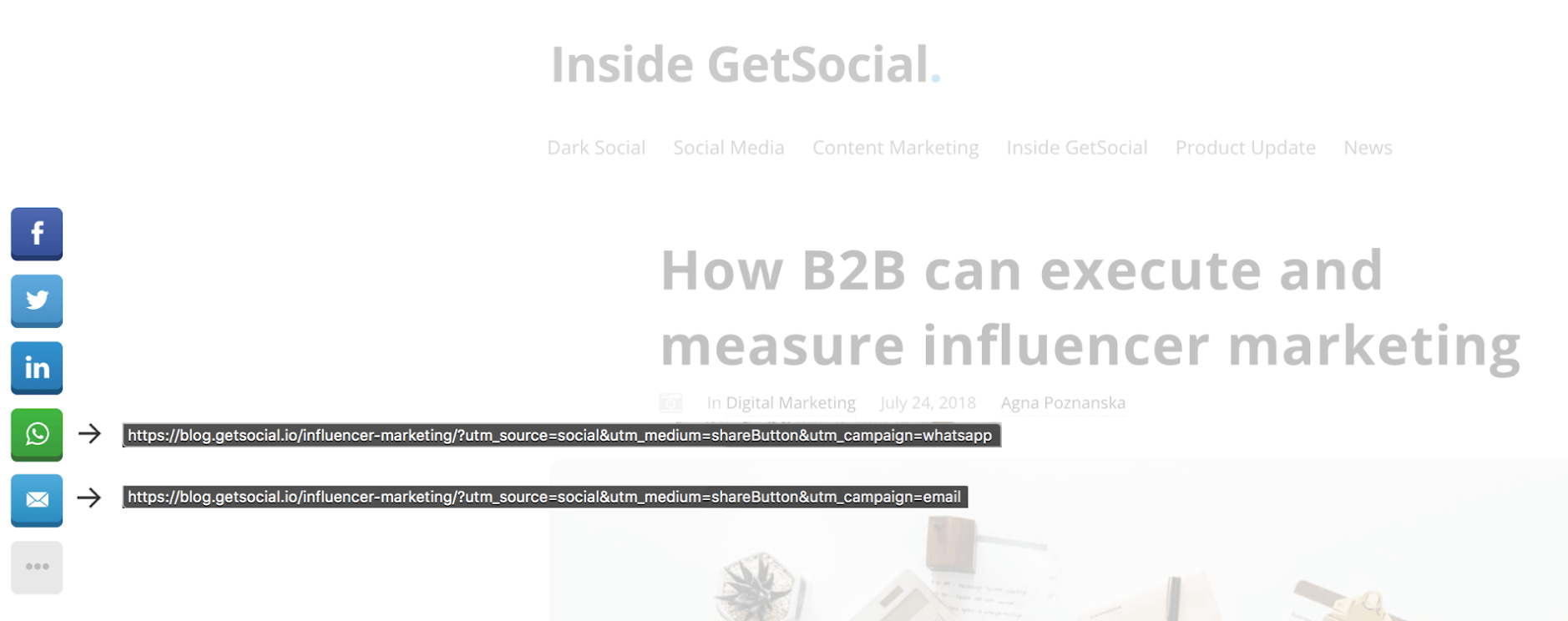In new research by GetSocial, we look at new methods of sharing, the rise of Dark Social as a traffic source, the decay of the Facebook Feed and a surprising comparison of both (spoiler: dark social wins)
There are now 1.2 billion pages indexed on Google mentioning Dark Social. Definitions vary but they don’t escape much of what Alexis Madrigal wrote in 2012:
“it shows up variously in programs as “direct” or typed/bookmarked” traffic (…) but that’s not actually what’s happening a lot of the time. Most of the time, someone g-chatted someone a link, or it came in on a big email distribution list, or your dad sent it to you.“
I call mainstream on the topic. Now, more than ever, marketers and audience developers must look at Dark Social. Not as a myth, something that may be happening, but as their new largest traffic source.
The importance of mobile in a Dark Social world
The Dark Social phenomenon didn’t start with Alexis’ article. It is as old as the internet, as old as content and link sharing go. But in a digital world, where mobile experiences are now a default, the behavior has exploded.
According to Mary Meeker’s 2018 internet trends report, Digital Media usage grew 4% in 2017, to a total of 5.9 hours per day per adult user. More than 55% of that time is spent on a mobile device.
In the digital news space, the Reuters Institute reports that the importance of smartphones shows no sign of slowing down. On average, 62% of their sample say they use the smartphone to get their news, every week.
In today’s world, the mobile experience must be flawless. You don’t want to disrespect the gateways of your audience (Google and Facebook) so everything must be extremely optimized.
Widgets, share buttons, plugins. All these fall under the ‘nice to have’ category, but are often removed from websites who want a cleaner, faster experience.
However, this doesn’t mean people stop sharing content through their mobile devices. They adapt. They use the native functions of their browsers, or they do a good old copy & paste of a link.
This is what we call Copy & Paste Shares. On our audiences, they represent sometimes as high as 80% of all shares, and we’ve seen their number double in the last year.
A worthy traffic source that is growing
Dark Social is sui generis, as higher shares don’t necessarily mean higher traffic. Contrary to public sharing, using a private messaging app or email to share content normally means one-to-one or one-to-few communication.
The traffic potential is limited, only scaling through many smaller interactions, different to the broadcast approach that Facebook is able to provide.
However, we still see an uprise in Dark Social Referrals (traffic coming from identifiable shares with no referral data):
Despite not growing at the same pace, we still saw an 89% increase of dark social traffic to publishers and brands alike.
Since July-2018, Dark Social became the largest social traffic source
But the shock came to us when we plotted Facebook Referral Traffic against Dark Social. We were aware of the trend but thought Facebook’s reign would still last.
Although Facebook is still king on specific and sporadic events (check the graph for spikes), Daily Referrals from Dark Social surpassed Facebook’s during July 2018.
Combined with the growth of Dark Social, the decay of Facebook’s ability to drive traffic to publishers was a critical factor. According to Parsely, this reality is bigger than you may think:
Constant changes to the feed algorithms have made some social networks volatile in their ability to generate traffic to publishers. Moreover, as people lose track of who their ‘digital’ friends are, they start to think twice when sharing content publicly. In turn, they share privately (messaging apps, chats, email) to close-knit groups where they can, in fact, control their voice and choose whom to engage with.
How to quickly know how much Dark Social Traffic you have
There are a few ways you can satisfy your Dark Social curiosity:
- Use a Dark Social Calculator (via Google Analytics)
- Do a quick audit of your direct traffic
- Append tags/utms to private sharing buttons
Let’s break those down.
1. Use a Dark Social Calculator (via Google Analytics)
After many requests, we’ve developed a simple Dark Social Calculator that pulls data directly from your GA account to assess how much Dark Social Traffic you may have.
Step 1: Visit checkdarksocial.com and log in using your Google Analytics Account
Step 2: Analyze your total estimated Dark Social traffic and top pages affected by it.
2. Do a quick audit of your direct traffic
Another option is to use your favorite web analytics software and filter some of the data on it. Let’s do this using Google Analytics, analyzing your last 30 days.
Step 1: Get your total sessions for the last month (Reports > Audience > Overview). This will serve as the basis for this exercise. In our case: 130,055 sessions
Step 2: Analyze your traffic sources (Reports > Acquisition > All Traffic > Channels). Find how much direct traffic you had. In our blog’s case: 20,724 sessions (21% of all traffic)
Step 3: Let’s create a filter that ignores traffic to the main landing page. In our websites case: 10,920 sessions which mean that the misattributed ‘direct traffic’ could be as high as 15%
Step 4: Wrap up. In our case, we estimate that we have a total of 15% dark social traffic to our website. Previously, Social had a 12% weight in our traffic, but adding DS it became 27%, surpassing referral and search traffic in its way to #2 source of traffic to our website.
(h4) 3 – Append tags/utms to private sharing buttons
Last but not least, you can ask your IT team to add some UTMs to private sharing buttons. Personally, I’m not a big fan of UTMs as they may create misattribution problems, especially in the private sharing sphere, but you can use it as last resort.
You can design these buttons and present them, through web and mobile experiences, like this:
If you check the code behind each of the buttons, you’ll find the tracking magic we’re discussing.
You can use your favorite tagging format or a tool like Smart Insights’ UTM/Google Analytics campaign code builder to build your links.
Ending Notes
Dark Social is timely and it’s relevant. Expect it to grow even further as concerns with privacy and general distrust in social media arise. As a brand, a marketer or a digital media professional, it’s important to know the basics of it and understand how to track it.
Once you measure, you can improve it. Your editorial teams can adapt content production towards private consumption/sharing. Your marketing teams can better attribute their results and better evaluate their strategies, just by measuring it. Your social teams can ensure that the right audiences are getting the right content, through effective distribution.
Dark Social doesn’t need to be hard, doesn’t need to be Dark. After all, it’s still social we’re talking about.
